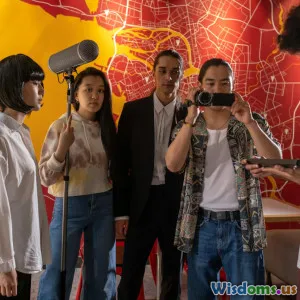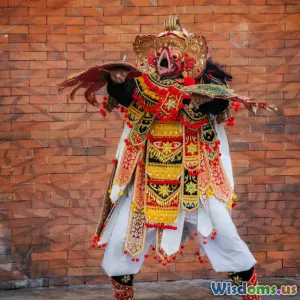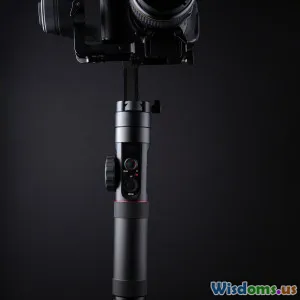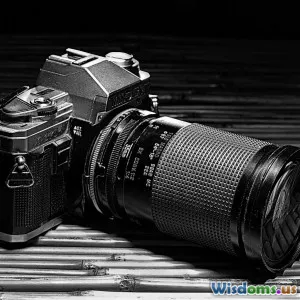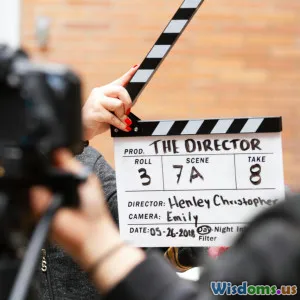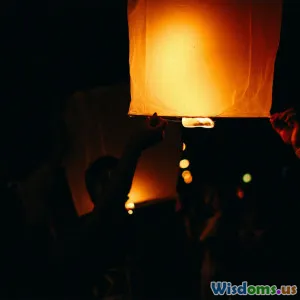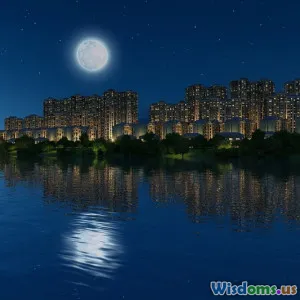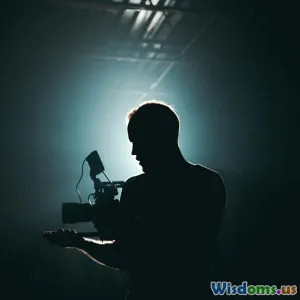
How Do Color Palettes Transform a Film Set
8 min read Explore how carefully crafted color palettes profoundly influence mood, narrative, and character perception on film sets. (0 Reviews)
How Do Color Palettes Transform a Film Set?
Film has the remarkable power to transport audiences to different worlds, evoke deep emotions, and tell complex stories often without a single word. Amid the many elements that bring this magic to life, the strategic use of color palettes on a film set stands as a silent yet commanding presence. When crafted thoughtfully, colors do more than just fill the frames—they create atmosphere, define character, reinforce narrative, and even influence viewers’ subconscious responses.
In this article, we dive deep into the transformative power of color palettes within film production, examining their artistic and psychological functions, their relationship to storytelling, and famous real-world applications. Strap in for a cinematic exploration that elevates your understanding and appreciation of this crucial filmmaking tool.
The Power of Color: More Than Just Aesthetic
Colors are inherently evocative. They have cultural associations, biological influences, and psychological effects. Think about how red can signal urgency or passion, blue can calm or distance, and yellow can energize or caution. These associations don’t just influence everyday experiences—they are harnessed by filmmakers to guide audience emotions subtly and powerfully.
Color as Emotional Language
Filmmakers often treat color as a visual language:
- Mood setting: A muted, cold blue palette during a bleak scene instills a sense of loneliness or desolation—as masterfully executed in The Revenant (2015) by director Alejandro González Iñárritu.
- Tone reinforcement: Warm sepia tones evoke nostalgia or romanticism, famously used in La La Land (2016) to heighten dreamlike sequences.
- Symbolic meaning: Color symbolism can foreshadow plot elements, hinting at themes such as danger (red) or peace (white). For example, in Schindler’s List (1993), the little girl’s red coat amidst a monochrome palette highlights innocence lost and the stark horrors of the Holocaust.
Psychological Impact on the Audience
Color influences vision pigments called cones which send signals to our brain, impacting mood and physical reactions. Studies show:
- Warm colors (reds, oranges) tend to increase heart rate and excitement.
- Cool colors (blues, greens) encourage calmness and reflection.
Example: The horror film Hereditary (2018) uses increasingly skewed color saturation to induce discomfort, paralleling the narrative’s growing psychological dread.
The Art and Science of Choosing a Film’s Color Palette
Collaboration Between Departments
Color selection is a collaborative process involving production designers, cinematographers, costume designers, lighting technicians, and directors. Each contributes insights to balance aesthetic with storytelling needs.
- Production Design: Decides environment colors—walls, furniture, props.
- Costume Design: Develops character palettes reflecting personality or development.
- Cinematography: Manipulates lighting and camera filters to enhance or alter colors.
Together, they create a cohesive color language that supports the narrative. For example, the synergy between costume and set colors in Black Panther (2018) underscores both cultural heritage and technological advancement.
Limited vs. Expanded Palette
Some films opt for highly restricted palettes to focus narrative:
- Mad Max: Fury Road (2015) uses predominant desert orange contrasted with electric blue to emphasize the harsh, dystopian environment.
Others deploy a wide spectrum to reflect complex emotional journeys or diverse settings.
Case Studies: Color Palettes in Iconic Films
Amélie (2001) - A Whimsical Warmth
Jean-Pierre Jeunet’s Amélie is famed for its saturated, warm palette dominated by reds and greens. This choice evokes a fairy-tale quality, infusing the Parisian cityscape with an energetic optimism that matches the protagonist’s quirky zest for life.
The Grand Budapest Hotel (2014) - Precise Pastels
Wes Anderson meticulously employs pastel pinks, purples, and blues to conjure a whimsical and nostalgic dimension echoing 1930s Europe’s blend of grace and decay. The carefully curated palette unifies set pieces, costumes, and props for a surreal yet harmonious visual experience.
Blade Runner 2049 (2017) - Neon and Haze
Cinematographer Roger Deakins used a striking palette of neon oranges and blues contrasted by deep shadows to convey a bleak futuristic world, enhancing themes of isolation and ambiguity.
Practical Implications: How Color Affects Production
Mood Boards and Previsualization
Before filming, color palettes are defined using mood boards. These help align all departments on the visual strategy.
Lighting Setup
Lighting crews adjust color temperature and gels to reinforce the palette, for example, using tungsten lights to warm scenes or blue filters to echo coldness.
Digital Color Grading
In post-production, colorists further refine the palette, adjusting contrasts, highlights, and saturation to perfect the film’s mood and ensure visual harmony across scenes.
Expert Insights
James Laxton, renowned cinematographer of If Beale Street Could Talk, highlights the importance of color: "Color is not just decoration, it's a storytelling tool—knowing how to use it can evoke deeper emotional connections."
Similarly, production designer Sarah Greenwood notes, "Once the palette is locked, it guides every set choice, ensuring the world feels lived-in and authentic, which ultimately immerses the audience."
Conclusion: The Invisible Narrative Artistry of Color
Color palettes do more than paint film sets—they breathe life into cinematic worlds, wield emotion, and guide stories subliminally. From the subtle shifts of hue revealing character shifts to bold palettes establishing genre and tone, their transformative power is both artistic and psychological.
Appreciating this dimension enriches our film-watching experience and offers filmmakers a potent avenue to communicate beyond dialogue and plot. Whether you are a cinephile, filmmaker, or creative professional, understanding the intricate dance of colors on a film set invites you to see cinema through a richer, more vibrant lens.
Harnessing the science and art of color palettes can truly transform how stories are told and felt, turning every frame into a masterpiece of emotional resonance.
Rate the Post
User Reviews
Popular Posts












